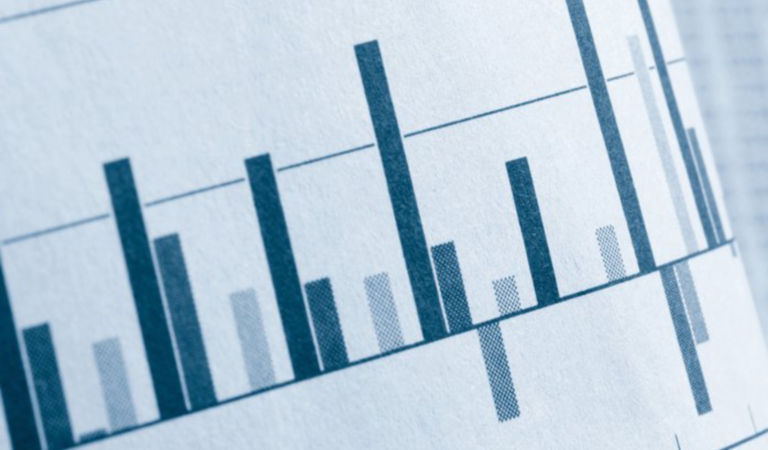US
US equities (-9.2%) fell by the most since March 2020 amid recession fears, persistently high inflation, and uncertainty about corporate earnings. Stocks tumbled and Treasury bond yields rose to multiyear highs after a spike in core consumer prices indicated that inflation continued to mount across broader areas of the economy. The core Consumer Price Index (CPI) rose 0.6% in August, above consensus estimates of 0.3% and double the 0.3% increase in July, as the Fed intensified its efforts to prevent inflation from becoming more entrenched. As expected, the Fed raised its benchmark interest rate by 75 bps, to a range of 3.0% – 3.25%. However, markets were surprised by the Fed’s more hawkish policy forecast that signaled interest rates would continue to rise rapidly to a higher level than previously anticipated. Median projections from Fed officials revealed that rates are expected to increase to 4.4% by the end of 2022 before peaking at 4.6% in 2023, lifting the odds of a recession. Economic headwinds weakened the outlook for third-quarter earnings, as analysts’ bottom-up earnings-per-share estimate for companies in the S&P 500 Index decreased 6.6% during the quarter. Companies were more pessimistic about their third-quarter earnings expectations, although their earnings guidance was more positive relative to recent quarters. The forward 12-month price-to-earnings ratio for the S&P 500 Index stood at 15.4, well below the 10-year average of 17.1.
Economic data released in September indicated that the economy was resilient despite tighter financial conditions and greater economic uncertainty. The labor market cooled modestly but remained broadly tight. In August, initial jobless claims trended lower, and nonfarm payrolls grew by a larger-than-expected 315,000 following an outsized gain of 526,000 in July, signaling that the Fed’s efforts to slow the economy did not significantly impair labor demand. A steady flow of new workers raised the participation rate to 62.4% — the highest since March 2020 — helping to ease labor cost pressures and lifting the unemployment rate to a six-month high of 3.7%. Resilient consumer spending supported the economy but also contributed to persistently high inflation. Lower gas prices and a robust labor market drove inflation-adjusted consumer spending up 0.1% in August after a 0.1% decline in July, while retail sales beat expectations, rebounding 0.3% following a 0.4% drop in July. The Conference Board’s Consumer Confidence Index exceeded forecasts in September, increasing 4.4 points to 108.0, amid improving views of current conditions and more optimistic future expectations. In August, sharply higher mortgage rates and waning demand exacerbated the housing market downturn. Although new-home sales unexpectedly increased, building permits rose at the slowest pace in more than two years, and pending and existing-home sales fell for the seventh month this year.
The manufacturing sector expanded at a slower pace in September, as the fourth straight decline in new orders led the Institute of Supply Management (ISM) Manufacturing Index lower by 1.9 points, to 50.9 — the lowest level since May 2020. In August, the services sector surprisingly expanded at the fastest pace in four months. The ISM Services Index edged up to 56.9 as employment improved, supply price pressures eased, and measures of business activity and new orders rose to their highest levels in 2022. A separate preliminary survey from S&P Global showed a notable improvement in the services sector in September; new orders and demand picked up, while inflation remained strong despite softening cost pressures due to a drop in the prices of some materials. In August, small-business sentiment experienced the highest advance since June 2001, as companies were less pessimistic about business conditions and the outlook for inflation.
All 11 sectors in the S&P 500 Index (-9.2%) posted negative results. Real estate (-13.2%) was the worst-performing sector, as REITs fell on continued housing market pressures. Communication services (-12.2%) was another notable underperformer, weighed down by interactive media & services (-12.5%). Information technology (-12.0%) fell on weakness across industries, particularly semiconductors & semiconductor equipment (-14.5%), technology hardware, storage & peripherals (-12.2%), and software (-11.6%).
Europe
European equities (-6.0%) were dragged lower by deteriorating market sentiment and macroeconomic headwinds amid tightening financial conditions, the energy crisis, slower economic growth, and increasingly hawkish central bank policies. Europe tipped closer to recession following a series of downbeat economic releases that showed a deepening cost-of-living crisis and weakening activity across the manufacturing and services sectors. Annual headline eurozone inflation surged to a record high of 10.0% (4.8% at the core level) in September as price increases broadened beyond food and energy to nearly all segments of the economy. The ECB delivered a historic 75 bps rate hike, and central banks across Europe also delivered outsized hikes. A deepening energy crisis threatened to fracture European unity and spurred governments to announce new measures to cushion households from soaring gas and power prices. EU energy ministers subsequently agreed on a proposal to reduce electricity demand and redistribute the energy industry’s surplus profits to households.
Europe’s manufacturing downturn accelerated in September as the Eurozone Manufacturing Purchasing Managers’ Index (PMI) dipped to a 27-month low of 48.4. Firms’ expectations for next year fell sharply amid weakening demand and higher input and output prices, which reaccelerated due to higher energy costs. Orders slumped at a much faster pace than production, signaling further production declines in the months ahead. Preliminary composite PMI data for September showed that services sector output dropped markedly, particularly in Germany, where the decline was the largest since June 2009. Economic sentiment fell sharply and by more than expected in September; industry confidence fell for the seventh straight month, while consumer confidence plummeted to a record low as economic uncertainty abounded. Eurozone unemployment held at an all-time low of 6.6% in August, as the labor market remained resilient despite strong macroeconomic headwinds.
In Italy (-3.9%), a right-wing coalition led by Giorgia Meloni won a decisive victory in the country’s snap election. Meloni pledged to maintain continuity with former Prime Minister Mario Draghi’s key policies, but markets were anxious about the new government’s ability to address the mounting pressures on Italy’s economy and the greater likelihood of frictions with the European Union. In the UK (-5.0%), stocks plunged, and the British pound tumbled to a multi-decade low after Chancellor Kwasi Kwarteng’s unorthodox debt-financed plan of tax cuts sparked a historic increase in borrowing costs and forced the Bank of England (BOE) to temporarily purchase long-term gilts to calm financial markets. New Prime Minister Liz Truss’s government hoped that radical tax cuts and deregulation would raise the country’s sluggish growth rate, but the widespread criticism of this approach, the lack of fiscal clarity, and severe financial turmoil significantly dented confidence in the government and fueled concerns about the sustainability of government debt at a time of skyrocketing inflation and interest rates. The BOE raised interest rates by 50 bps, forecasting that the UK economy will shrink 0.1% in the third quarter. In Germany (-6.4%), the government announced a sizable €200 billion plan to push electricity and gas prices down for businesses and consumers. Preliminary data for September revealed that inflation accelerated 10.9% from the prior year as energy prices rose 43.9% over the same period.
Pacific basin
Pacific Basin equities (-6.4%) fell during September. In Japan (-6.3%), the BOJ maintained its ultra-loose monetary policy, as expected. For the first time since 1998, the Ministry of Finance intervened in the currency market to prop up the yen, but the widening differential between Japanese and US interest rates ultimately drove the yen back to historic lows. Core CPI rose 2.8% year over year in August as a weak yen and higher raw materials costs lifted consumer prices at the fastest pace in nearly eight years and well above the BOJ’s target of 2.0%. Macroeconomic data suggested that Japan’s slow economic recovery has been resilient, even as another stimulus package is slated for release at the end of October. In August, retail sales rose above expectations, up 1.4% from the previous month, while industrial output grew at a much faster-than-expected pace of 2.7% amid easing supply-chain disruptions and strong production of semiconductor and flat-panel equipment. However, the manufacturing sector expanded at a slower pace in September as the au Jibun Bank Japan Manufacturing PMI slipped to 50.8 due to ebbing global demand and eroding purchasing power from rising inflation. The BOJ’s Tankan Survey showed that sentiment among large manufacturers continued to slide amid a gloomier outlook for global economic growth, while sentiment among large services and construction companies improved as Japan prepared to reopen its borders. Unemployment edged down to 2.5% in August, from 2.6% in July, and the job-to-applicant ratio climbed to 1.32 from 1.29, signaling that the recent increase in COVID cases did not drag down labor demand.
Australia (-5.7%) ended lower. The Reserve Bank of Australia (RBA) continued to tighten policy rapidly, raising interest rates by 50 bps and taking the cash rate to 2.35% — the highest rate since 2015. The Australian dollar sank and stocks rallied after RBA Governor Phillip Lowe signaled a potential end to large interest-rate hikes if economic conditions moderate, a sharp contrast to the more hawkish rhetoric from other G10 central banks. Even as the number of jobs grew by 33,500 in August, the unemployment rate unexpectedly rose to 3.5%, from 3.4% in July, giving the RBA more flexibility to ease its pace of rate hikes. In August, retail sales increased for the eighth straight month, advancing by a greater-than expected 0.6%. Better consumer sentiment and business confidence provided additional evidence that the economy is currently weathering sharply higher interest rates.
Hong Kong’s (-10.7%) government scrapped mandatory quarantine rules for travelers in order to revive the city and regain competitiveness with most other countries that have reopened their borders. The move comes ahead of a series of high-profile events including a summit for global bankers and an international rugby tournament that could help revive Hong Kong’s international reputation after an extended period of pandemic isolation, which contributed to a record decline in population and a shrinking labor force. Retail sales in August surprisingly fell 2.9% year over year after increasing 1.1% in July, while exports were lower for the fourth consecutive month, plunging 14.3% year over year.
Singapore’s (-3.0%) core inflation rate rose at the fastest pace in 15 years, advancing 5.1% year over year in August, amplifying pressure on the central bank to raise interest rates again in October.
Emerging markets
Emerging markets (EM) equities (-9.3%) ended September lower as risk sentiment fell steeply. Within EM, Latin America was flat, while Europe, the Middle East, and Africa (EMEA) and Asia finished down.
Latin American equities (+0.0%) were bolstered by Brazil (+0.9%). Despite rising interest rates across most markets, Brazil’s central bank opted to hold rates steady at 13.75% after previously signaling its steep hiking cycle may be nearing a peak. Brazilians readied for the first round of the most polarized presidential election in decades, with polls indicating a tighter race between President Jair Bolsonaro and former two-term leftist President Luiz Inácio Lula da Silva. Mexico’s (-0.4%) central bank hiked interest rates for the eleventh straight time, and by more than expected, as it fought to curb the highest inflation since the turn of the century and to stem a drop in the peso. In Chile’s (-4.0%) referendum, voters rejected a proposed left-leaning constitution, dealing a heavy blow to President Gabriel Boric and prompting him to fire the interior minister and one of his chief advisors.
EMEA equities (-6.0%) fell. Eastern European countries continued to feel the spillover effects from Russia’s escalating war with Ukraine. Many traditional supply routes for food and energy have been cut off or remapped, exacerbating inflation in countries such as Poland (-8.8%) and the Czech Republic (-10.7%). South Africa’s (-3.6%) energy crisis pressured the rand, strained households, and threatened the country’s industrial sector. Operational and structural problems at state-owned utility Eskom have led to rolling blackouts that are costing the country an estimated US$40 million a day. With no long-term solutions in sight, investor confidence was rattled by the potential for power rationing and lower production. Countries in the Persian Gulf have benefited from exports of gas and oil at a time of strained energy supplies and robust demand. However, a strengthening US dollar and prospects for slowing global economic growth weighed on Kuwait (-8.2%), the United Arab Emirates (-5.9%), and Qatar (-4.7%).
Asian (-10.8%) equities finished lower as the strong US dollar and geopolitical tensions clouded the economic growth outlook in the region. The trade-dependent nations of Taiwan (-12.2%) and South Korea (-12.5%) were hampered by slowing global growth, which threatened to curb the demand for semiconductors and electronic equipment — two of the country’s largest exports. In China (-14.1%), exports fell well short of expectations in August as COVID restrictions disrupted production and logistics and global demand ebbed. The housing market slumped deeper into crisis and some of China’s largest banks cut deposit rates for the first time since 2015 in an effort revive the flagging economy. Rapidly rising interest rates in the US have accelerated capital outflows from China and made it difficult for the People’s Bank of China to provide more support for the economy without further pressuring the renminbi, which continued to fall precipitously against the US dollar. In India (-4.1%), the current account deficit widened by the most in four years in the second quarter, primarily driven by higher commodity prices and a weakening rupee. Higher US interest rates and the declining rupee will likely spur the central bank to implement a sizable rate hike, despite the potential impact on economic growth.






























Monthly Market Review — November 2025
Continue readingBy